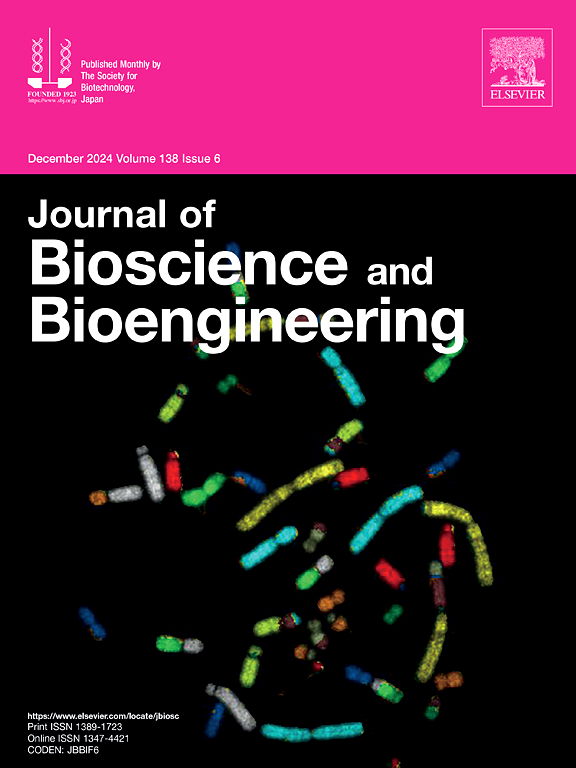Preparation of hair follicle germs using centrifugal forces for hair regenerative medicine
IF 2.9
4区 生物学
Q3 BIOTECHNOLOGY & APPLIED MICROBIOLOGY
引用次数: 0
Abstract
Hair regenerative medicine presents a potential approach to treat hair loss. Mesenchymal and epithelial cells may be transplanted to regenerate de novo hair follicles, as epithelial–mesenchymal interactions are crucial for hair follicle morphogenesis. However, transplanting a mixture of the two cell types does not lead to efficient hair follicle formation, and engineering tissue grafts with these cell types before transplantation is necessary. Hair follicle germ-like aggregates (HFGs), which are found during hair follicle development, induced highly efficient de novo hair follicle formation. Although this is a sophisticated approach of mimicking in vivo hair follicle morphogenesis, further studies are required owing to its laborious and time-consuming nature. This study proposed a straightforward approach to prepare HFGs using centrifugal forces. We fabricated a centrifugal device consisting of tube tips that facilitate cell transplantation as a high cell dense aggregate, in contrast to conventional cell suspension injections. To prepare HFGs, mouse embryonic epithelial and mesenchymal cells were packed into the device using a two-step centrifugation method. Immediately after preparation, HFGs were directly injected into the back skin of nude mice, resulting in de novo hair follicle formation. This centrifugal approach significantly improved hair follicle regeneration efficiency compared with that of conventional cell suspension injection. Unlike previous studies, this approach does not require several days of culture, which could potentially facilitate rapid and cost-effective hair regenerative medicine.
利用离心力制备毛囊细菌用于头发再生医学。
头发再生医学提出了一种治疗脱发的潜在方法。间充质细胞和上皮细胞可以移植来再生毛囊,因为上皮-间充质相互作用对毛囊的形态发生至关重要。然而,移植两种细胞类型的混合物并不能导致有效的毛囊形成,在移植前用这些细胞类型进行工程组织移植是必要的。毛囊细菌样聚集体(HFGs)是在毛囊发育过程中发现的,可诱导高效的新生毛囊形成。虽然这是一种复杂的模拟体内毛囊形态发生的方法,但由于其费力和耗时的性质,需要进一步的研究。本研究提出了一种利用离心力制备HFGs的简单方法。我们制造了一个由管尖组成的离心装置,与传统的细胞悬液注射相比,它促进了细胞移植作为一个高细胞密度的聚集体。为了制备HFGs,采用两步离心方法将小鼠胚胎上皮细胞和间充质细胞装入装置中。制备后立即将HFGs直接注射到裸鼠背部皮肤中,使毛囊新生形成。与传统细胞悬液注射相比,离心方法显著提高了毛囊再生效率。与以前的研究不同,这种方法不需要几天的培养,这可能会促进快速和经济有效的头发再生医学。
本文章由计算机程序翻译,如有差异,请以英文原文为准。
求助全文
约1分钟内获得全文
求助全文
来源期刊

Journal of bioscience and bioengineering
生物-生物工程与应用微生物
CiteScore
5.90
自引率
3.60%
发文量
144
审稿时长
51 days
期刊介绍:
The Journal of Bioscience and Bioengineering is a research journal publishing original full-length research papers, reviews, and Letters to the Editor. The Journal is devoted to the advancement and dissemination of knowledge concerning fermentation technology, biochemical engineering, food technology and microbiology.
 求助内容:
求助内容: 应助结果提醒方式:
应助结果提醒方式:


